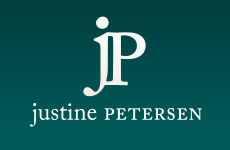From the St. Louis Businesss Journal.

Though it’s early in the latest round of the federal Paycheck Protection Program (PPP) for small businesses hurt by the pandemic, St. Louis lenders report strong interest but far less than what they saw in the first round.
Bank of Belleville expects to make $10 million to $15 million in PPP loans this round, compared with $50 million last year. “The majority of borrowers from our first round of PPP loans will not qualify this time because of the revenue decline test. I estimate that 35% to 40% of the borrowers will qualify,” said Ron Stephens, president and CEO. “We are also seeing a decline in the average loan amount although this is hard to quantify at this time.”
Second-round PPP loans are available for borrowers with 300 or fewer employees that experienced a decline in revenue of 25% or more in 2020 compared with 2019 and that have used or intend to use the full amount of their first-draw PPP loan by the time they receive their second-round loan. The second-round PPP fund contains $284 billion in all.
Overall, Stephens expects about 25% of the PPP loan volume with a lower average loan, resulting in 15% to 20% of the dollar amount the bank did last year.
Other lenders said much the same thing.
“I don’t expect the same volume as round one given the additional restrictions on the program, such as the 25% revenue reduction restriction and smaller loan size,” said Jeff Ludwig, CEO of Midland States Bank, which made about 2,300 PPP loans, for a total of approximately $312 million, in the first round.
“We also know that there are likely fewer businesses overall that will either qualify under the revenue reduction test, or that are choosing to use other resources,” said Scott Goodman, president of Enterprise Bank & Trust. Enterprise was the St. Louis region’s No. 1 PPP lender by volume last year, approving $407 million in loans, according to Business Journal research.
At Together Credit Union, President and CEO Bob McKay said, “Based on conversations we’ve had with member businesses, we are estimating about one-half to two-thirds the demand we saw from last year’s program.”
As for the financial benefits of PPP to lenders, Goodman said, “Round two will have a positive impact on the back half of 2021, but overall a smaller impact than round one.”
Earlier this week, Justine Petersen, which provides capital, loans and other financial services to minority-owned small businesses and entrepreneurs in St. Louis, reported receiving 150 PPP inquiries in the first week — “everything from a hair salon, to a retail store, to a daycare,” said Galen Gondolfi, senior loan counselor at the nonprofit, a Community Development Financial Institution (CDFI).
The Small Business Administration reopened its PPP loan portal Jan. 11 to community financial institutions, such as CDFIs, then to smaller community lenders on Jan. 15 and to all lenders on Jan. 19. The program expires March 31.
The first PPP round ran intermittently last year from April 3 through Aug. 8. Through two tranches of funding, the stimulus program resulted in more than 5 million loans totaling more than $500 billion.

